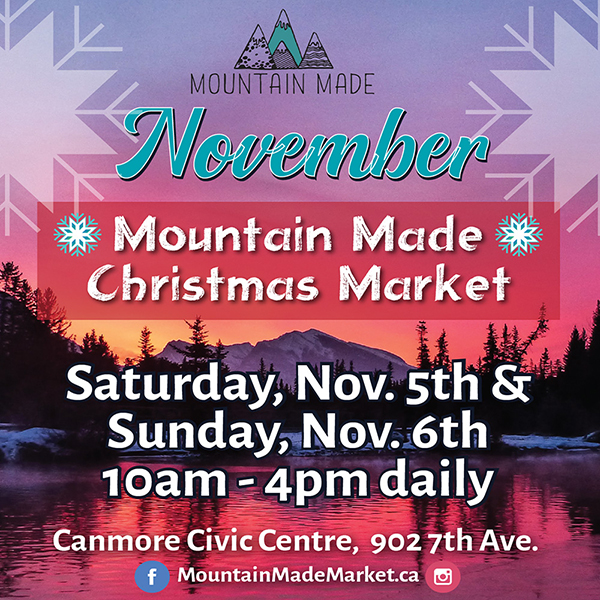
In a recent issue of A Wilder View, I let subscribers know I had restocked 2023 calendars. As expected, most people ordered one or two, and I was happy to send them by regular mail.
One person ordered six. From a creator’s point of view, that’s great. Clearly, most of those will be gifts, which means more people will come to know my artwork.
To send one calendar via Canada Post qualifies as an oversized envelope under 500 grams, around $4. For two calendars, it’s still under that threshold weight, and it costs around $6.
But once you get above that weight, it becomes a small parcel and the cost jumps.
Our techy world allows me to do much of this at home. I package items, measure, and weigh them, then enter that information into the Canada Post website. I can pay for the shipping and print the label before I drop the item at the post office.
There are several benefits to this process. First, I can estimate a shipping cost and inform the customer of the charge without delay. Second, I can avoid a lineup since there’s usually a bin in which to drop prepaid items. Finally, I avoid surprises at the post office if something costs more than expected.
For the subscriber who ordered six calendars, one might assume the most efficient delivery would be together in one parcel. But when I measured, weighed and entered the data into the Canada Post site, the total came to over $24 at the most economical rate. That rate even includes a small business program discount.
More than $6 of that $24 was a fuel surcharge, an amount you don’t see until the final total.
After conferring with my understanding and patient customer, I sent six calendars in three different business-sized envelopes so that each one didn’t exceed 500 grams and qualified for regular mail.
It’s a ridiculous solution to a preposterous problem, but it saved my customer some money.
In my online store, one print sells for $28.99. Eliminating the time taken to paint the image, the cost of producing that product stems from a professional print of the image, a backer board, an artist bio, and a cellophane sleeve, plus shipping materials if sold in the online store.
Shipping just one print in a flat mailer to Calgary, about an hour’s drive from my house, now costs over $20. Before the pandemic, it was $12. As a consumer, it’s hard to justify paying almost as much to send something as it does to buy it. It only becomes worth it for customers if they want to buy two or more prints. While plenty of people do just that, sometimes they just want one.
You might have seen a recent news article where Canadian businesses are now allowed to charge a fee for paying by credit card. Small businesses must take credit cards to remain competitive, but more cards, especially cards with rewards points, charge merchants a percentage for each transaction. It can be anywhere from 2% to 5%.
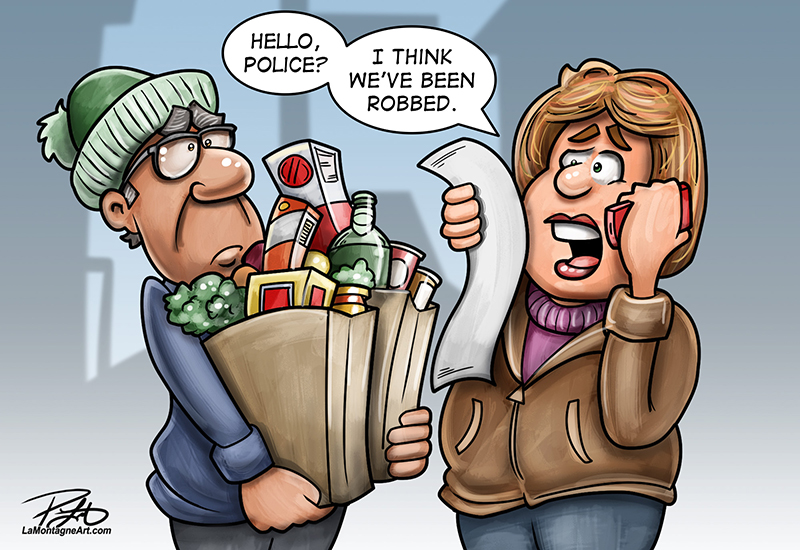 When a telecommunications provider, chain grocery store, or other large corporation that boasts record profits every quarter adds this fee, it is a money grab. These companies have been working hard for years to get people to use credit cards, and it’s included in their pricing.
When a telecommunications provider, chain grocery store, or other large corporation that boasts record profits every quarter adds this fee, it is a money grab. These companies have been working hard for years to get people to use credit cards, and it’s included in their pricing.
Small businesses are reluctant to add that extra fee to a credit card payment. Even justified, an added fee will turn people off. So, most will absorb the cost and try to factor it into the price of an item without making it noticeably more expensive.
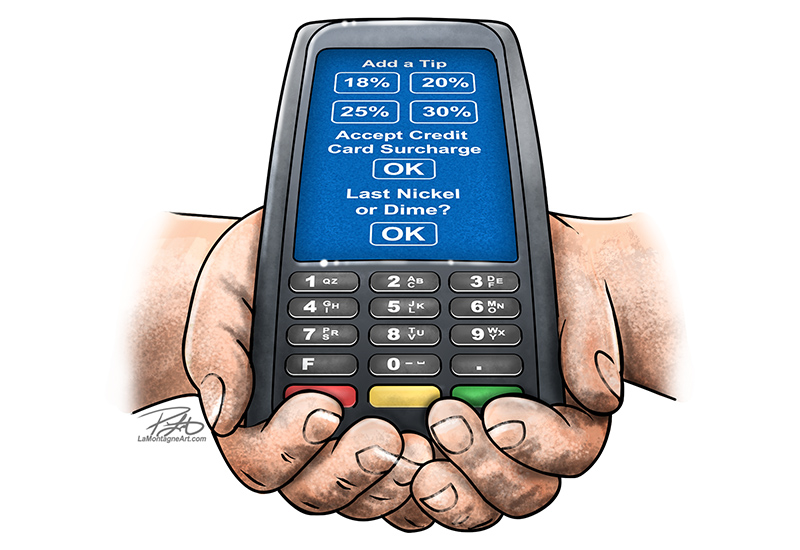 The best we can do is suggest somebody pay by e-transfer as there’s no cost to the consumer or vendor. Debit is also preferred as the transaction fee is significantly less. Or better yet, how about cash, if you even carry that around anymore?
The best we can do is suggest somebody pay by e-transfer as there’s no cost to the consumer or vendor. Debit is also preferred as the transaction fee is significantly less. Or better yet, how about cash, if you even carry that around anymore?
Online payment processing services like PayPal or Stripe have fees and take a percentage of each sale. 2.9% plus a transaction fee. That doesn’t seem like much until you factor that into larger transactions. For example, I was recently commissioned to paint someone’s pet, work I love to do. Of the 50% deposit, I gave $30 to PayPal. I’ll give another $30 for the final payment when the work is complete.
I tried an Etsy store for my vinyl stickers last year to see what would happen. After several sales, however, I shut it down. Their fees were death by a thousand cuts. I can’t even remember all of them, but every listing and sale was nickel and dimed until the result wasn’t worth my time.
On top of that, Etsy gives preferred placement and listing to people who offer free shipping on their items. They hammer that message into vendors. Their justification is that people are so used to buying on Amazon that they want free shipping on everything.
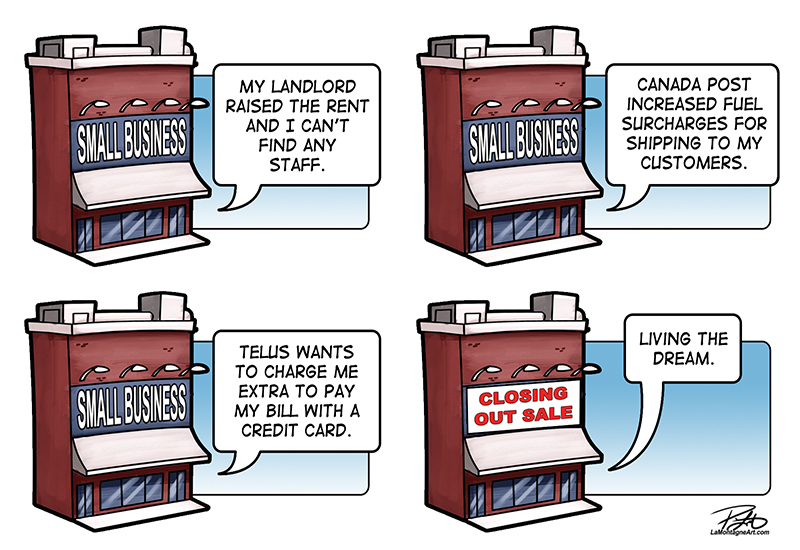 To expect a self-employed small business owner and independent artist to compete with Amazon’s pricing is ludicrous. The only reason they can do that is their sales volume gives them preferred credit card and shipping rates. Any company listing an item on Amazon accepts a much smaller profit margin per item to have a spot on the site.
To expect a self-employed small business owner and independent artist to compete with Amazon’s pricing is ludicrous. The only reason they can do that is their sales volume gives them preferred credit card and shipping rates. Any company listing an item on Amazon accepts a much smaller profit margin per item to have a spot on the site.
It’s also no secret that Amazon employees are overworked and underpaid. The self-employed can relate.
I can’t tell you how many people scoff when a self-employed artist refers to what they do as work. Some figure it’s simply a matter of drawing something, slapping it on a website, and counting the bags of money.
Sadly, many young artists who love what they create believe selling it will be easy. Share some images on Instagram; before you know it, you’re moving out of Mom and Dad’s house into that mansion on the coast.
It’s the ‘If you build it, (they) will come’ business plan. There’s a reason that movie had ‘Dreams’ in the title.
 I’ll have a booth at another Mountain Made Market at the Canmore Civic Centre this weekend. It’s a two-day event, and I always enjoy introducing my artwork to new people and reconnecting with familiar faces.
I’ll have a booth at another Mountain Made Market at the Canmore Civic Centre this weekend. It’s a two-day event, and I always enjoy introducing my artwork to new people and reconnecting with familiar faces.
Several people will no doubt tell me they want to consider a purchase and ask if I have an online store. At this point, I’ll explain the inflated shipping costs, let them know that my best prices are always at these markets, and do what I can to try to make the sale on the spot.
Otherwise, they’ll take a business card, put it into a bag, purse, or wallet, and I never hear from these folks again. We’re busy people; it’s just what we do. And sometimes we take a card to be polite, rather than say, “no thanks, not for me.”
But hopefully, some will like one or more of my whimsical critters in a small or large print, magnet, coaster, sticker, calendar or another item and decide to pick up something for themselves or for a gift.
Then they’ll probably pay by credit card, which is fine and welcome because I’ll take that fee out of my profit to make the sale. That’s just part of the cost of creating art for a living.
Which, despite what some might think, is definitely work.



 Although I have a few paintings in progress, I have none to share right now as I’m dealing with more time-sensitive work.
Although I have a few paintings in progress, I have none to share right now as I’m dealing with more time-sensitive work.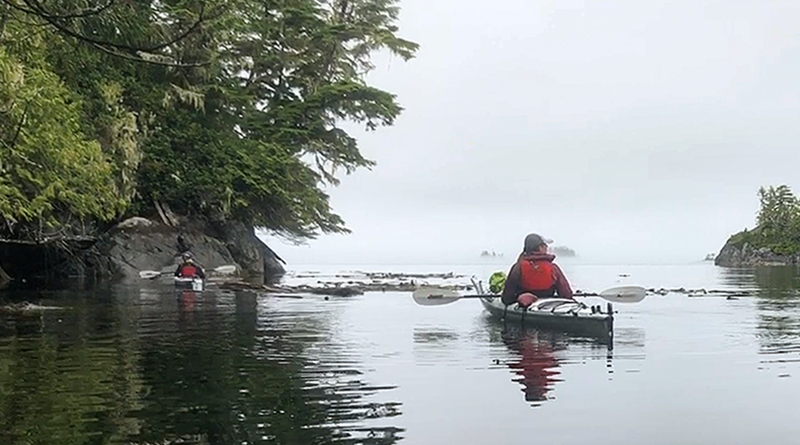 I’m anxious to sort through my photos and write about the experience. But I’ll have to fit it in between catching up with work and taking care of the rest of this week’s duties.
I’m anxious to sort through my photos and write about the experience. But I’ll have to fit it in between catching up with work and taking care of the rest of this week’s duties.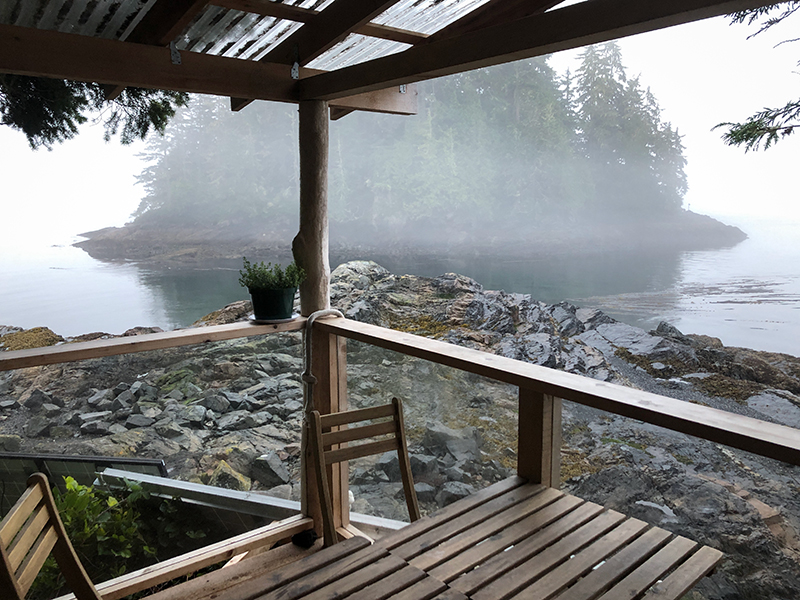 One of the highlights of this trip was the abundance of humpback whales. They were everywhere! There’s nothing like dozing off in a comfortable bed in a large tent at night and waking up each morning to the sound of whales exhaling just offshore.
One of the highlights of this trip was the abundance of humpback whales. They were everywhere! There’s nothing like dozing off in a comfortable bed in a large tent at night and waking up each morning to the sound of whales exhaling just offshore.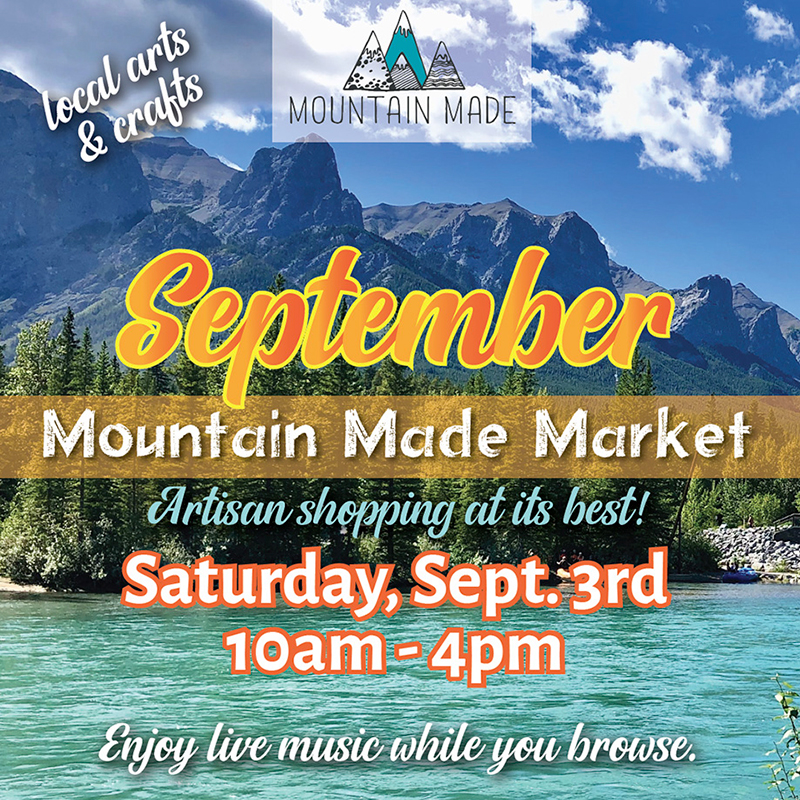 I’ll have another post soon with more photos and thoughts on the trip. I often forget that time away from the desk, especially in a natural environment, does wonders for my state of mind. Refreshed and rejuvenated, I am looking forward to putting a lot of energy into the paintings I’ve got on the go, and excited about the ones I’ve planned for the fall.
I’ll have another post soon with more photos and thoughts on the trip. I often forget that time away from the desk, especially in a natural environment, does wonders for my state of mind. Refreshed and rejuvenated, I am looking forward to putting a lot of energy into the paintings I’ve got on the go, and excited about the ones I’ve planned for the fall.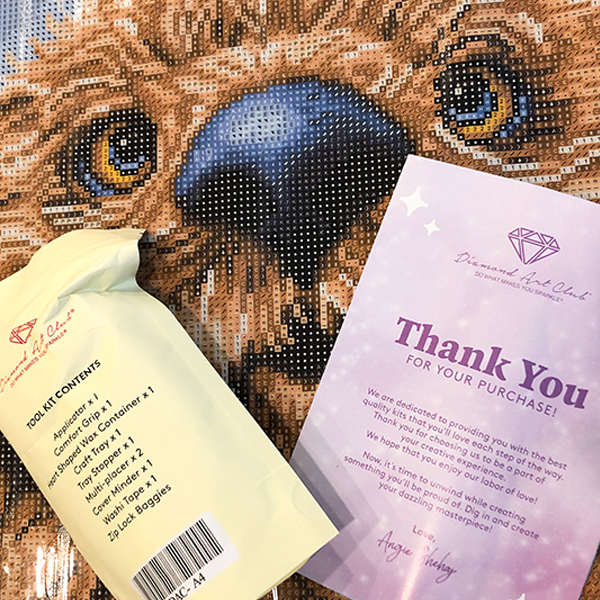
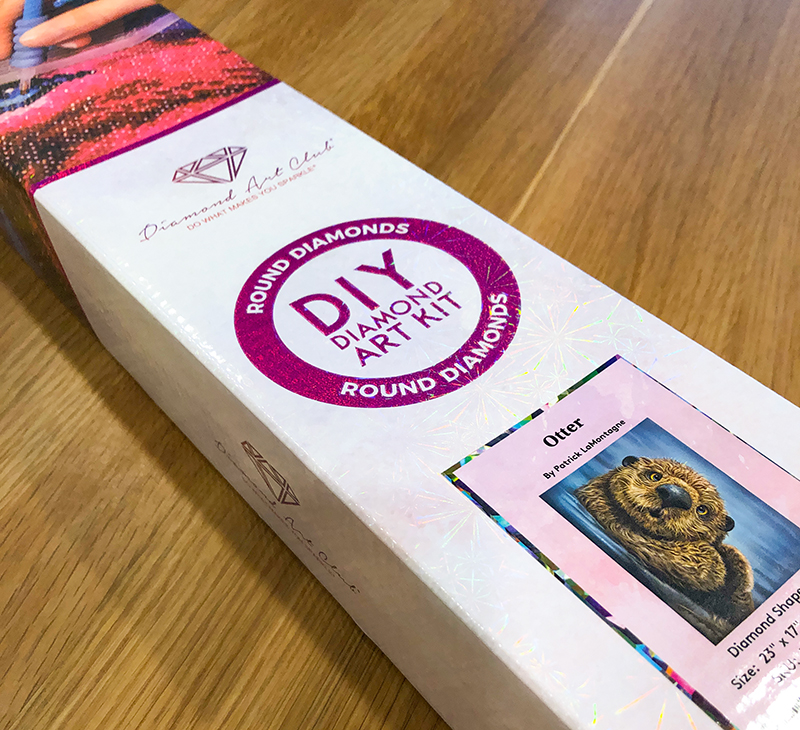
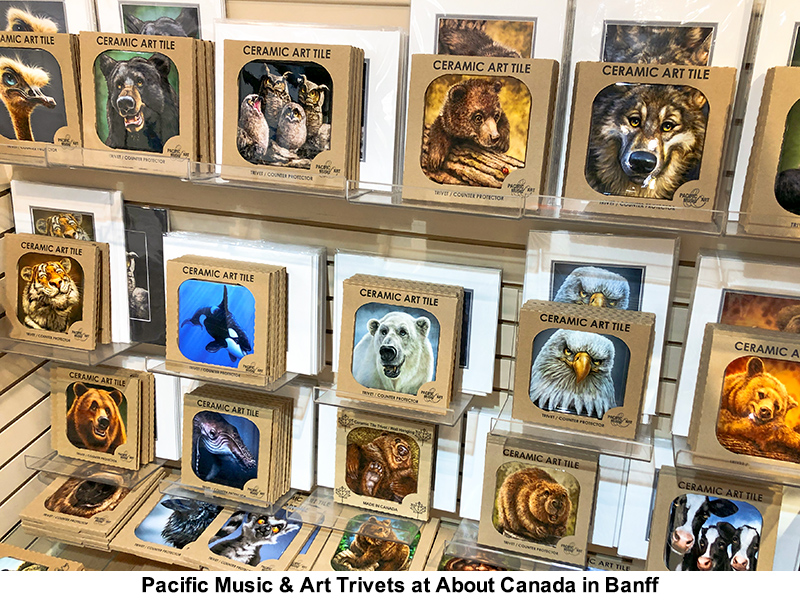
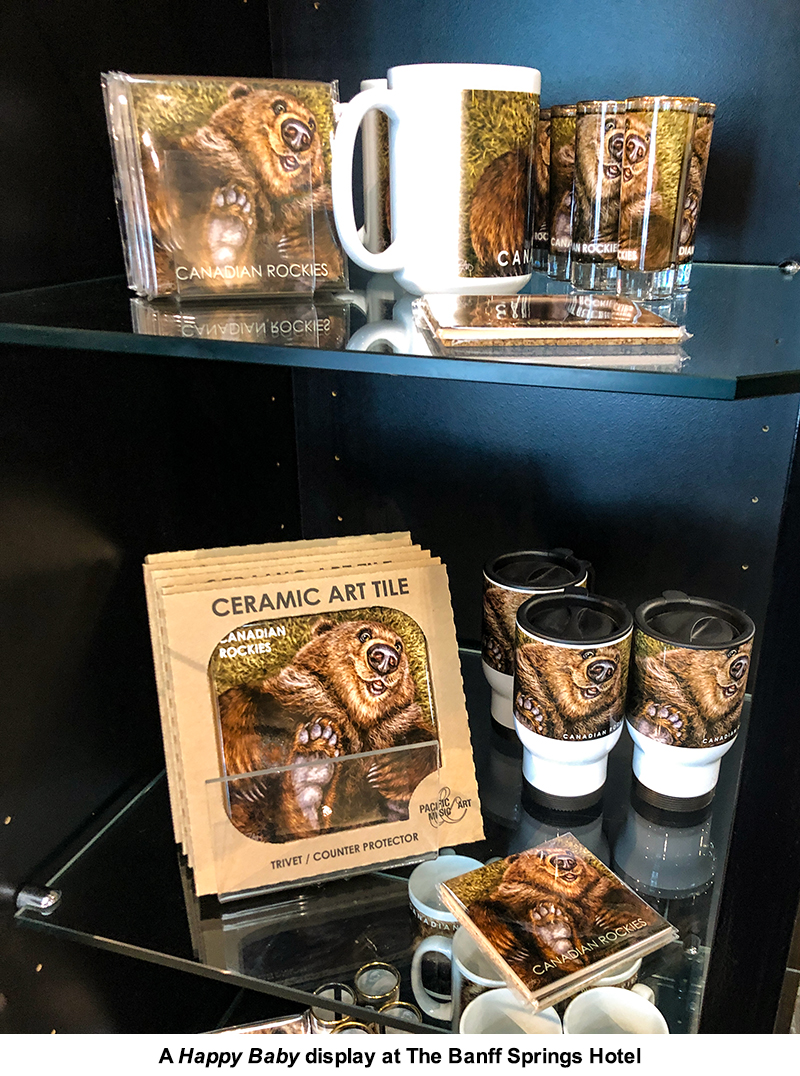
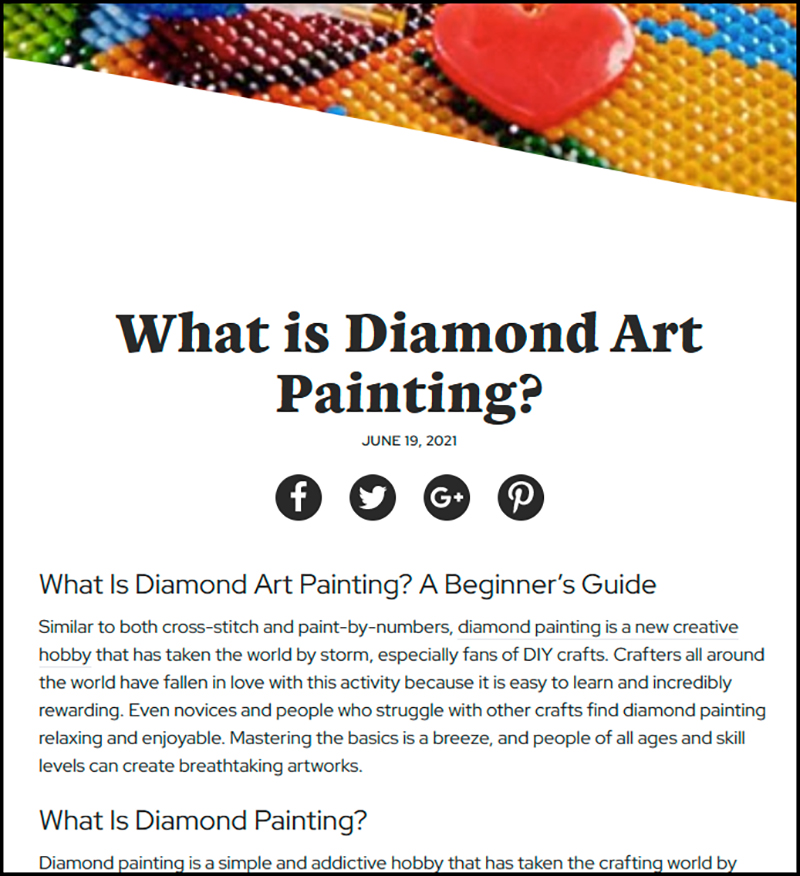
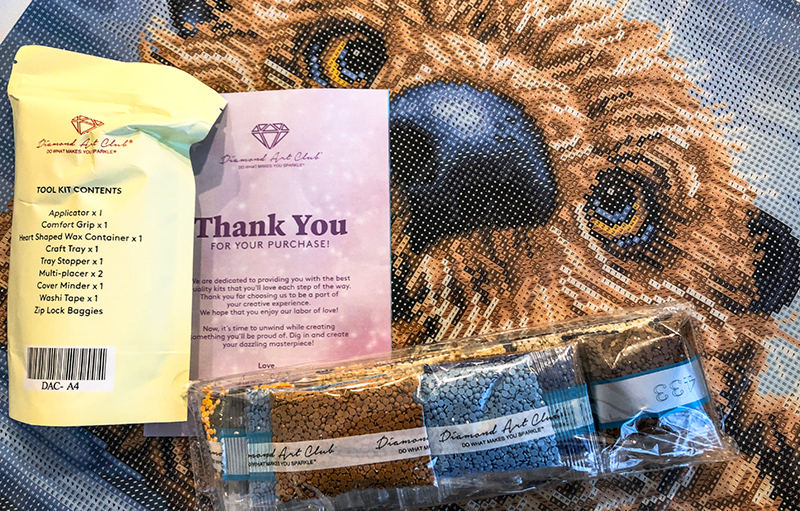
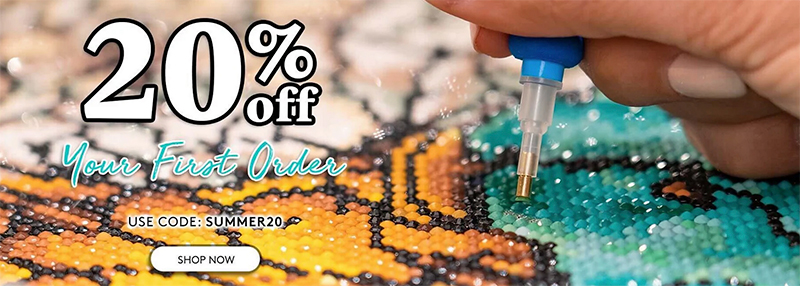
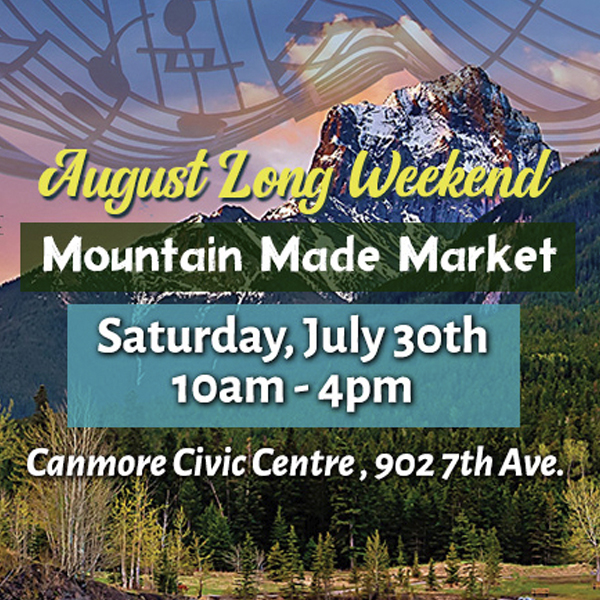
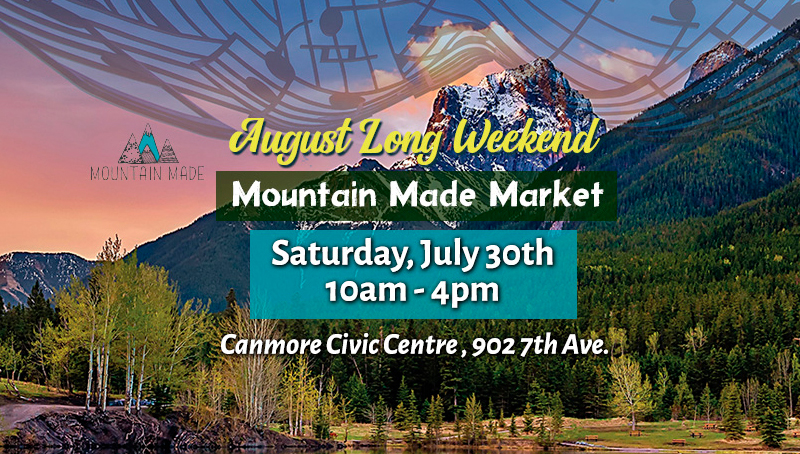

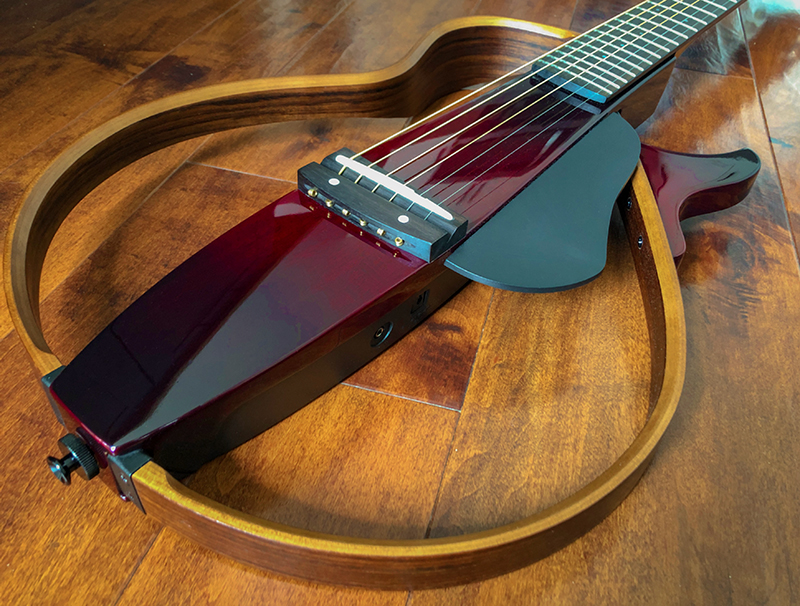 If you had asked me as a teenager what I wanted to be when I grew up, I would have answered that I wanted to be a writer. Most artists have several creative interests. But like with my artwork, I accepted too many offerings from unkind critics and shelved any ambition to do anything with those talents for many years.
If you had asked me as a teenager what I wanted to be when I grew up, I would have answered that I wanted to be a writer. Most artists have several creative interests. But like with my artwork, I accepted too many offerings from unkind critics and shelved any ambition to do anything with those talents for many years.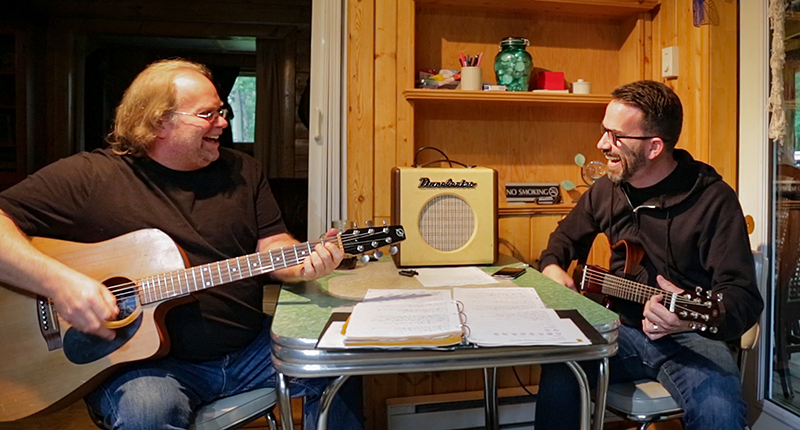 This was a favourite, laughing and clowning around while screwing up the chords and lyrics of American Pie, an old standard from those Crown and Anchor days. We had a great weekend at the cabin and I’m looking forward to the next time when I’ll have a few more months of practice under my belt.
This was a favourite, laughing and clowning around while screwing up the chords and lyrics of American Pie, an old standard from those Crown and Anchor days. We had a great weekend at the cabin and I’m looking forward to the next time when I’ll have a few more months of practice under my belt.
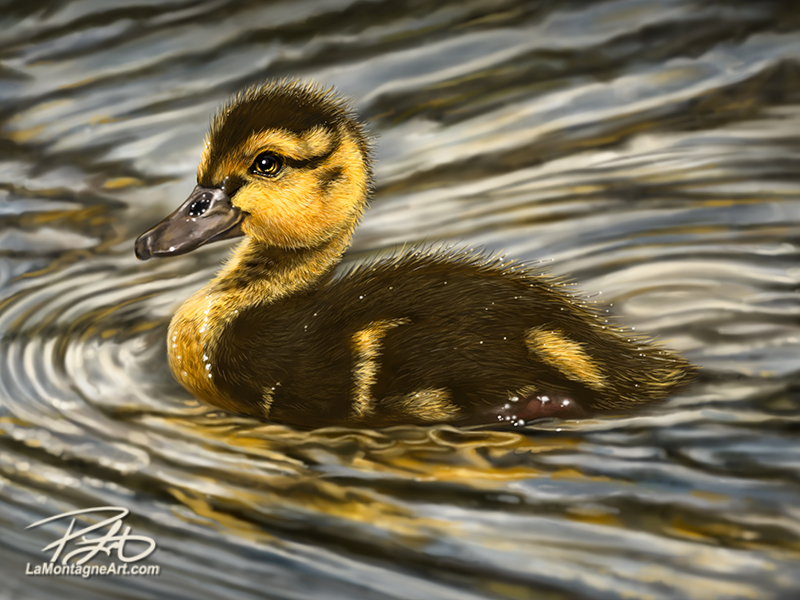 Here’s a little duckling I finished painting this morning. The duckling itself wasn’t difficult, but the water certainly was. Ironic that I began this year with a commission piece where water was also the hardest part of that painting. There will always be room for improvement in any artistic pursuit, so I welcome these unexpected challenges. The work might become boring without them.
Here’s a little duckling I finished painting this morning. The duckling itself wasn’t difficult, but the water certainly was. Ironic that I began this year with a commission piece where water was also the hardest part of that painting. There will always be room for improvement in any artistic pursuit, so I welcome these unexpected challenges. The work might become boring without them.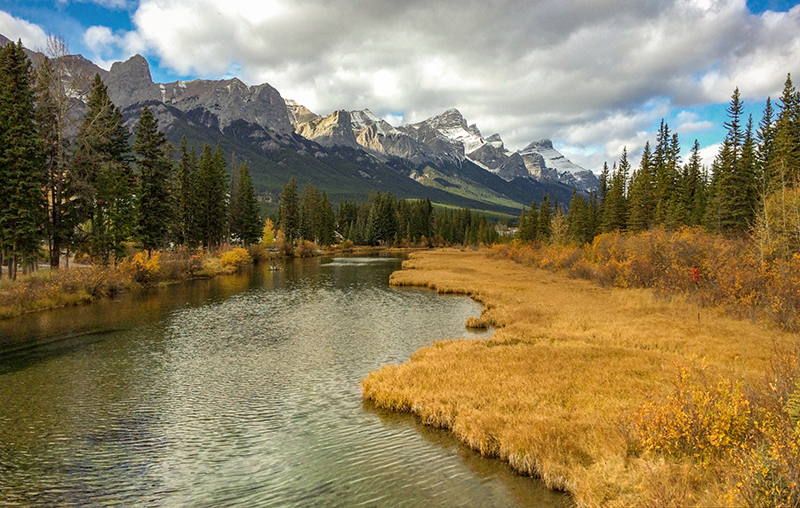 I took the reference for this painting four years ago from the boardwalk that winds through the Policeman’s Creek wetlands here in Canmore. Easily accessible for people of all fitness levels, it’s located in the middle of town and might as well be an urban park. It’s a pretty walk, a nice shortcut from where we live to downtown Canmore, and preferable to walking on the sidewalk of a busy street.
I took the reference for this painting four years ago from the boardwalk that winds through the Policeman’s Creek wetlands here in Canmore. Easily accessible for people of all fitness levels, it’s located in the middle of town and might as well be an urban park. It’s a pretty walk, a nice shortcut from where we live to downtown Canmore, and preferable to walking on the sidewalk of a busy street.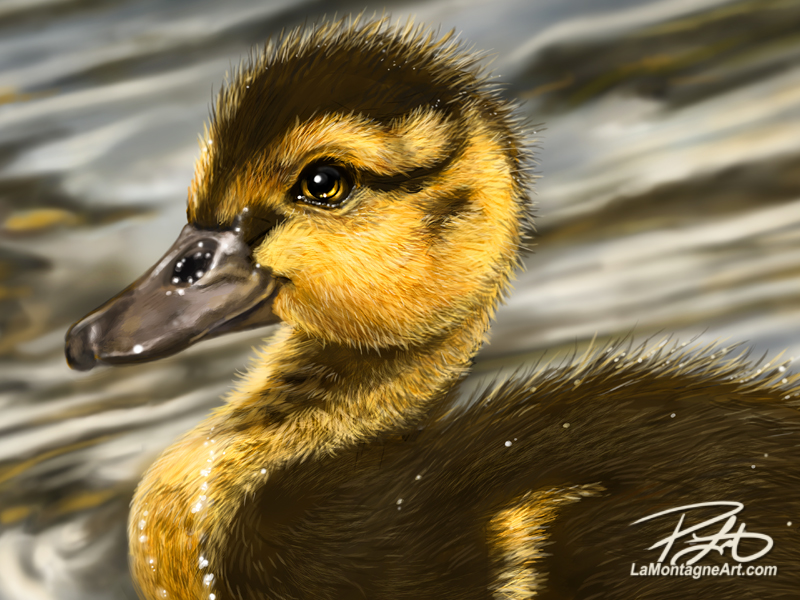 The reason for fewer paintings is no mystery. Despite the dramatic decline in the newspaper industry, it’s still a big chunk of my income, and I’m unable to put off or set aside my daily editorial cartoon deadlines. As a result, those take priority every day and painting time is often sacrificed for the cartoons.
The reason for fewer paintings is no mystery. Despite the dramatic decline in the newspaper industry, it’s still a big chunk of my income, and I’m unable to put off or set aside my daily editorial cartoon deadlines. As a result, those take priority every day and painting time is often sacrificed for the cartoons.
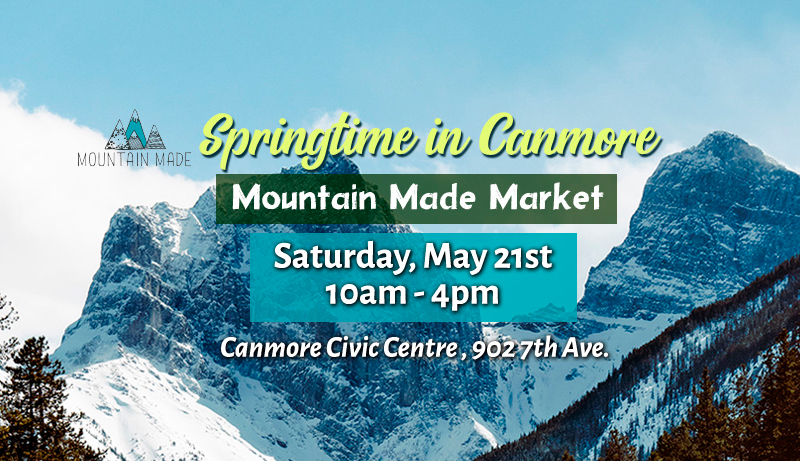 Last week, I drove to Innisfail to
Last week, I drove to Innisfail to 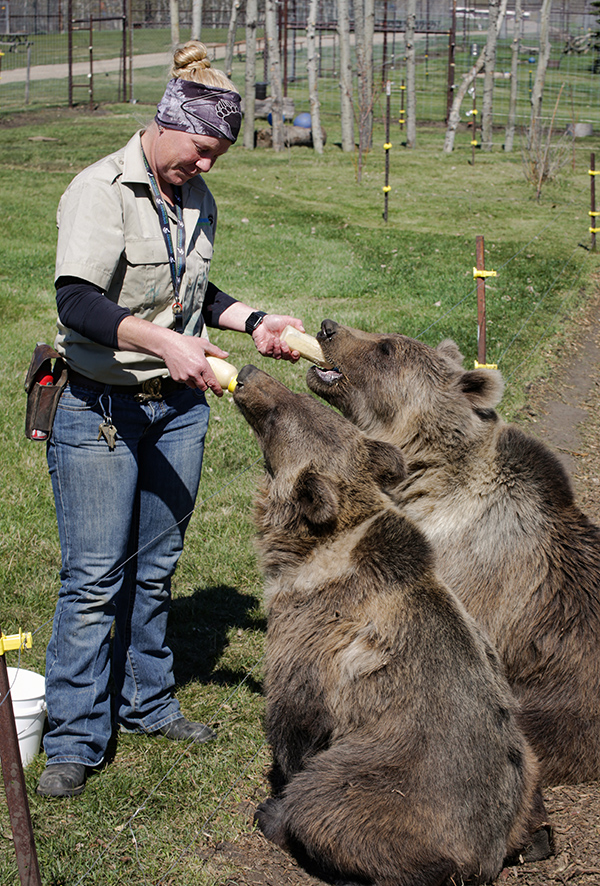 The Calgary Zoo and Discovery Wildlife Park have a great relationship. Staff from one will often visit the other, participate in educational and training days, and learn from each other’s procedures and policies.
The Calgary Zoo and Discovery Wildlife Park have a great relationship. Staff from one will often visit the other, participate in educational and training days, and learn from each other’s procedures and policies.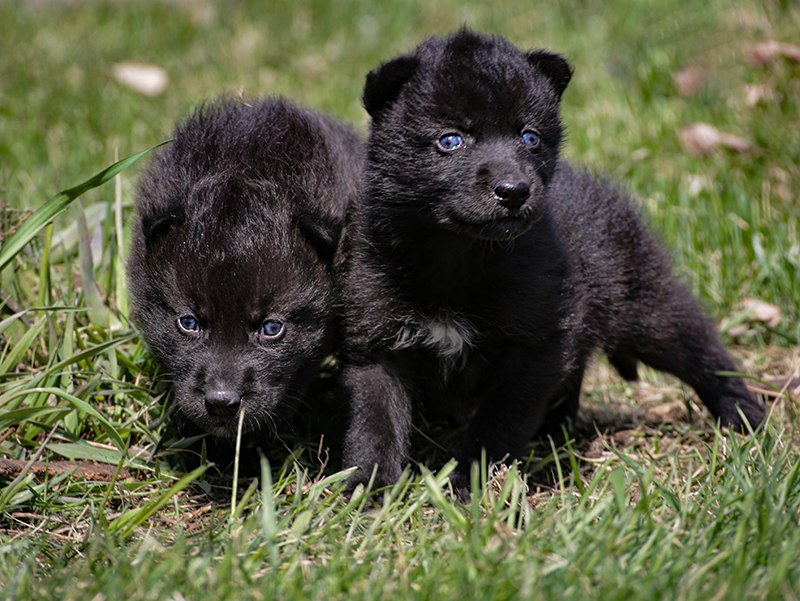 We got to meet their new wolf pups, though only the keepers who feed them are allowed to touch them. The vet has prohibited any other contact until the pups have their vaccinations next month. But I got plenty of photos, and there will most definitely be a painting coming this year.
We got to meet their new wolf pups, though only the keepers who feed them are allowed to touch them. The vet has prohibited any other contact until the pups have their vaccinations next month. But I got plenty of photos, and there will most definitely be a painting coming this year.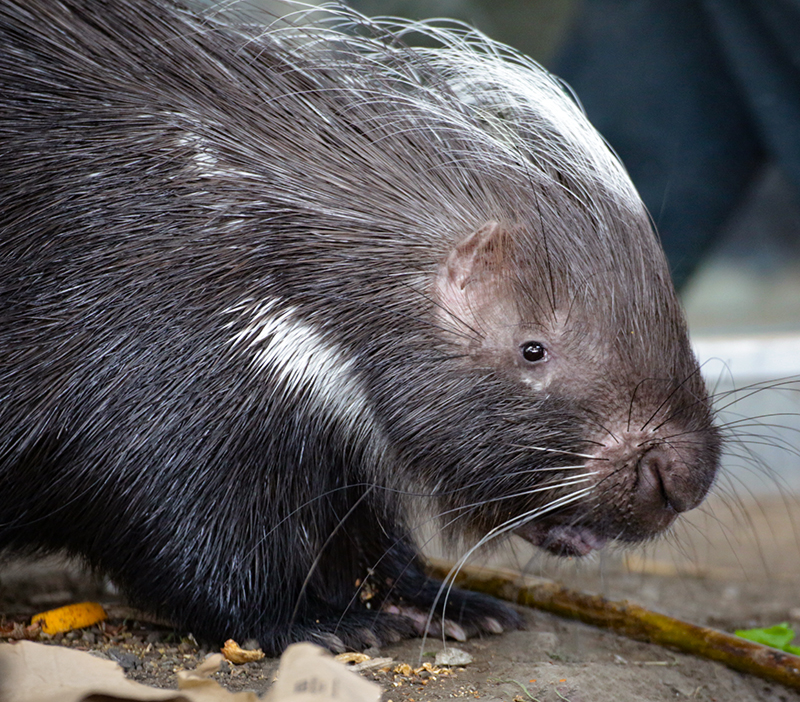 After years of failure, I might have finally got the reference I needed to paint an African porcupine. They had just been given food for which they had to work a little, which is a form of enrichment. The lighting was good, I could get down to eye level, and the little critter kept looking right at me. I was shooting through glass, but if there isn’t much glare and I can cup my hand around the lens hood, that often works just fine. I must have taken 300 shots. I discarded most of them on the first pass, but there are painting reference potentials in those I kept.
After years of failure, I might have finally got the reference I needed to paint an African porcupine. They had just been given food for which they had to work a little, which is a form of enrichment. The lighting was good, I could get down to eye level, and the little critter kept looking right at me. I was shooting through glass, but if there isn’t much glare and I can cup my hand around the lens hood, that often works just fine. I must have taken 300 shots. I discarded most of them on the first pass, but there are painting reference potentials in those I kept.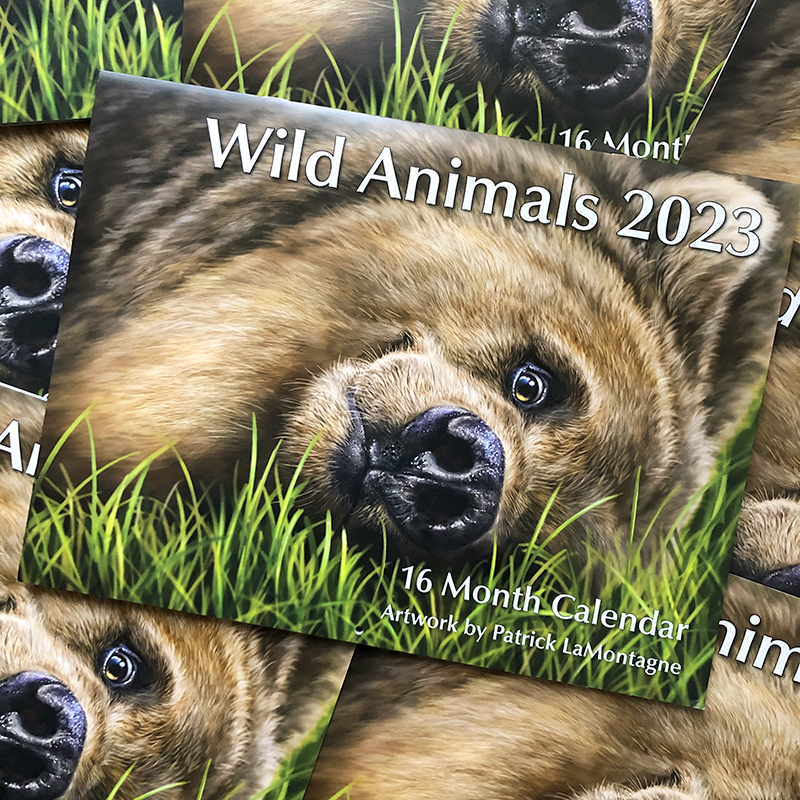 The shipment arrived while I was at the zoo, so I sent a text to our next-door neighbours asking them to grab it for me off the step for the third time in recent weeks. For a guy who is home most of the time, all my recent orders have arrived while I’ve been away. My neighbours got the first calendar as a Thank-You, but you can get yours at The Mountain Made Market this weekend at the Canmore Civic Centre.
The shipment arrived while I was at the zoo, so I sent a text to our next-door neighbours asking them to grab it for me off the step for the third time in recent weeks. For a guy who is home most of the time, all my recent orders have arrived while I’ve been away. My neighbours got the first calendar as a Thank-You, but you can get yours at The Mountain Made Market this weekend at the Canmore Civic Centre.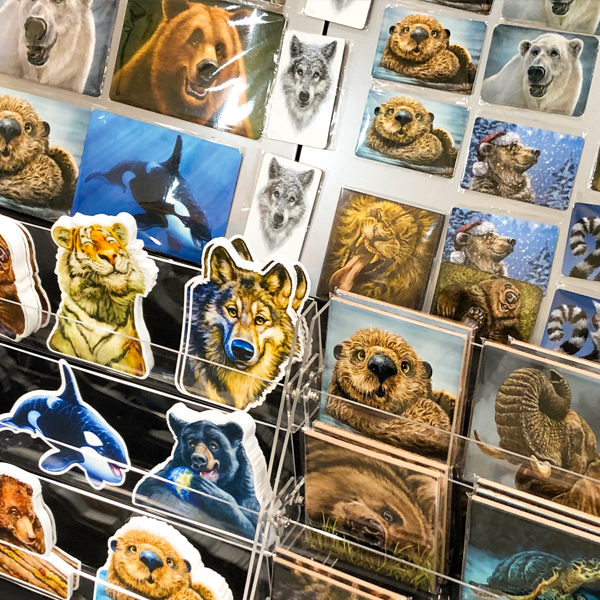
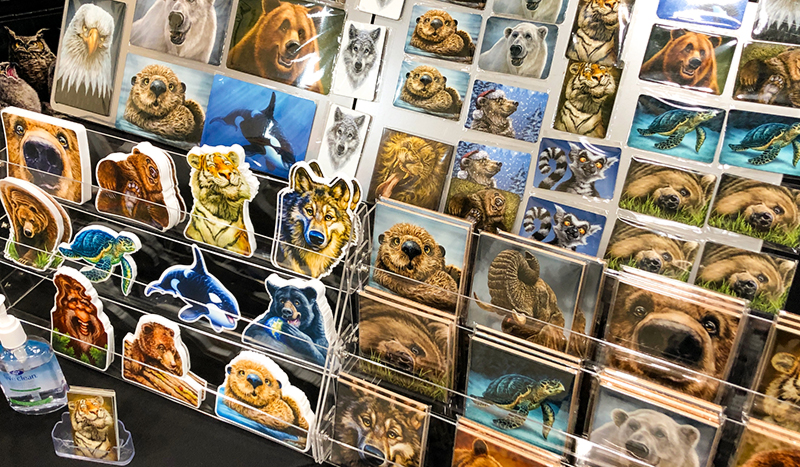 I’ve had some great
I’ve had some great 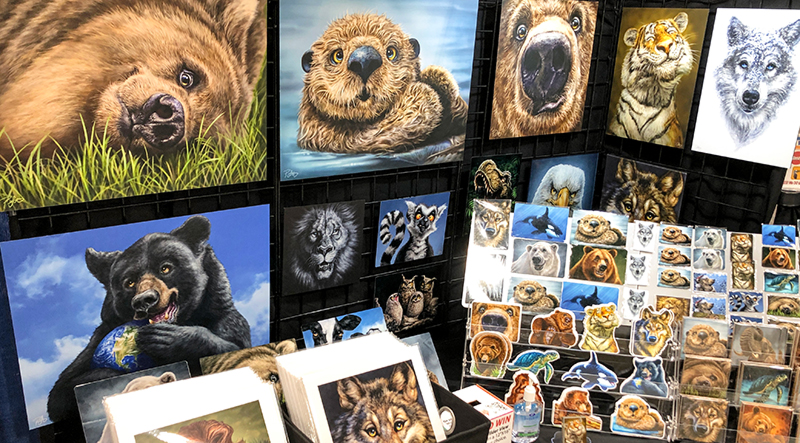 As I’ve written before, it is human nature to smile in response to a smile, so when people run into a couple of walls and tables full of smiling animals, those people smile, laugh, and say things like “ohmygawd, they’re so cuuuuuuuuute!”
As I’ve written before, it is human nature to smile in response to a smile, so when people run into a couple of walls and tables full of smiling animals, those people smile, laugh, and say things like “ohmygawd, they’re so cuuuuuuuuute!” I had a fantastic location, and because I was next to a pillar, with no booth beside me, I could stretch out a little, which made the layout even better. I had good neighbours, which always makes the show better, but I don’t remember ever having bad ones at this event. Best of all, not a political or contentious discussion or experience all weekend long, which was incredibly refreshing.
I had a fantastic location, and because I was next to a pillar, with no booth beside me, I could stretch out a little, which made the layout even better. I had good neighbours, which always makes the show better, but I don’t remember ever having bad ones at this event. Best of all, not a political or contentious discussion or experience all weekend long, which was incredibly refreshing.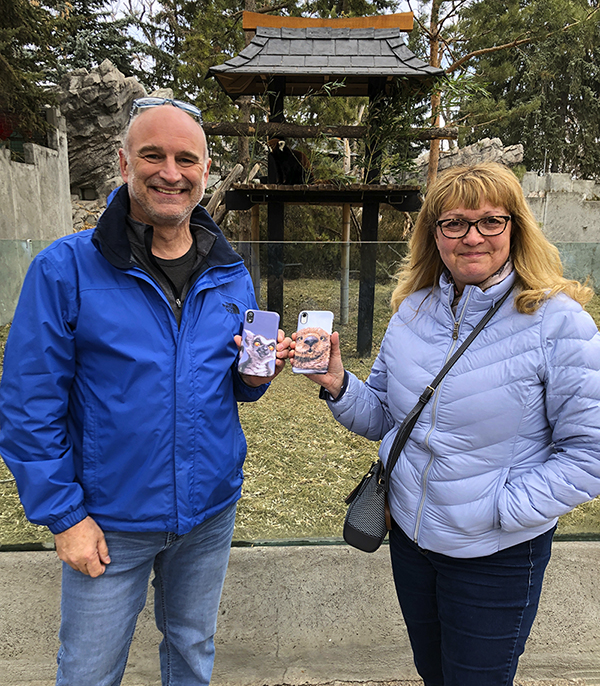 Sheldon and Tracy are the folks I spent the afternoon with at the zoo and wrote about
Sheldon and Tracy are the folks I spent the afternoon with at the zoo and wrote about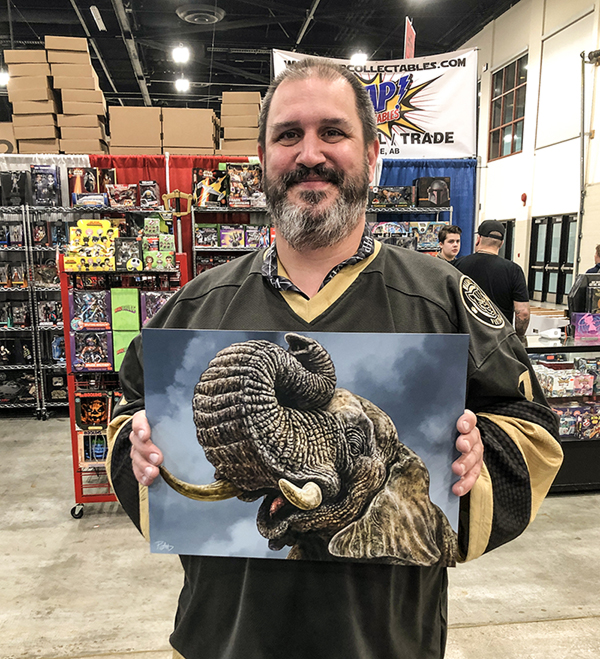 That was the perfect start to the event because not only did he love the painting, he bought the 12”X16” metal print for his wife’s birthday. He assured me I could talk about it here, and I wouldn’t likely ruin the surprise. I had brought two of those metal prints with me this weekend, just in case he bought one, so I’d still have another for the wall.
That was the perfect start to the event because not only did he love the painting, he bought the 12”X16” metal print for his wife’s birthday. He assured me I could talk about it here, and I wouldn’t likely ruin the surprise. I had brought two of those metal prints with me this weekend, just in case he bought one, so I’d still have another for the wall.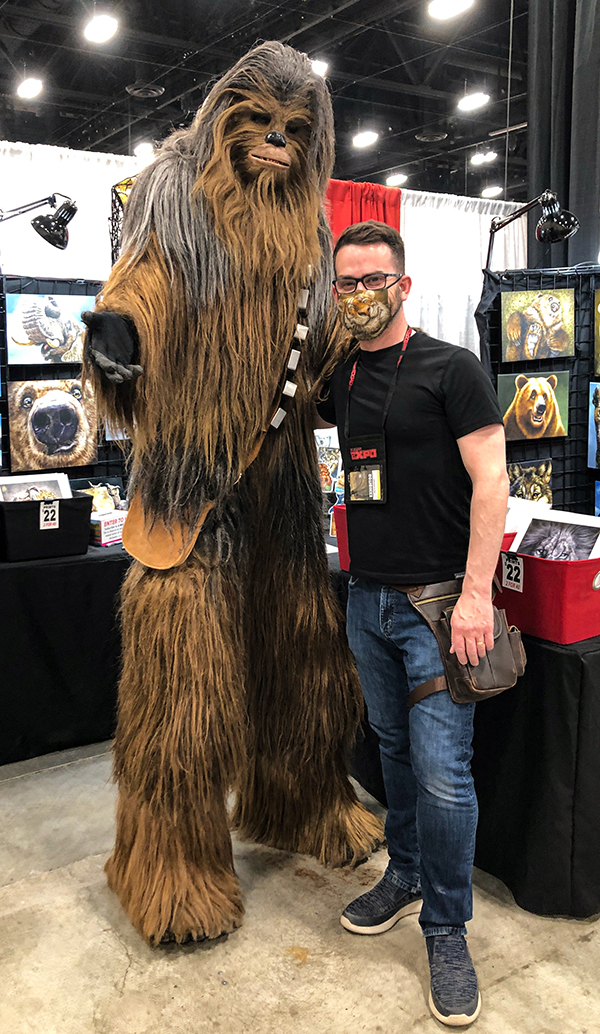 Several years ago, Shane created this Chewbacca costume from scratch. It is truly a masterpiece and looks movie-quality. It has an electronic voice box for the growls, stilts for the height and is a highlight of the show for many people, especially kids. Every year, he comes to Expo with this outfit and has even added a C3PO backpiece from the Empire Strikes Back.
Several years ago, Shane created this Chewbacca costume from scratch. It is truly a masterpiece and looks movie-quality. It has an electronic voice box for the growls, stilts for the height and is a highlight of the show for many people, especially kids. Every year, he comes to Expo with this outfit and has even added a C3PO backpiece from the Empire Strikes Back.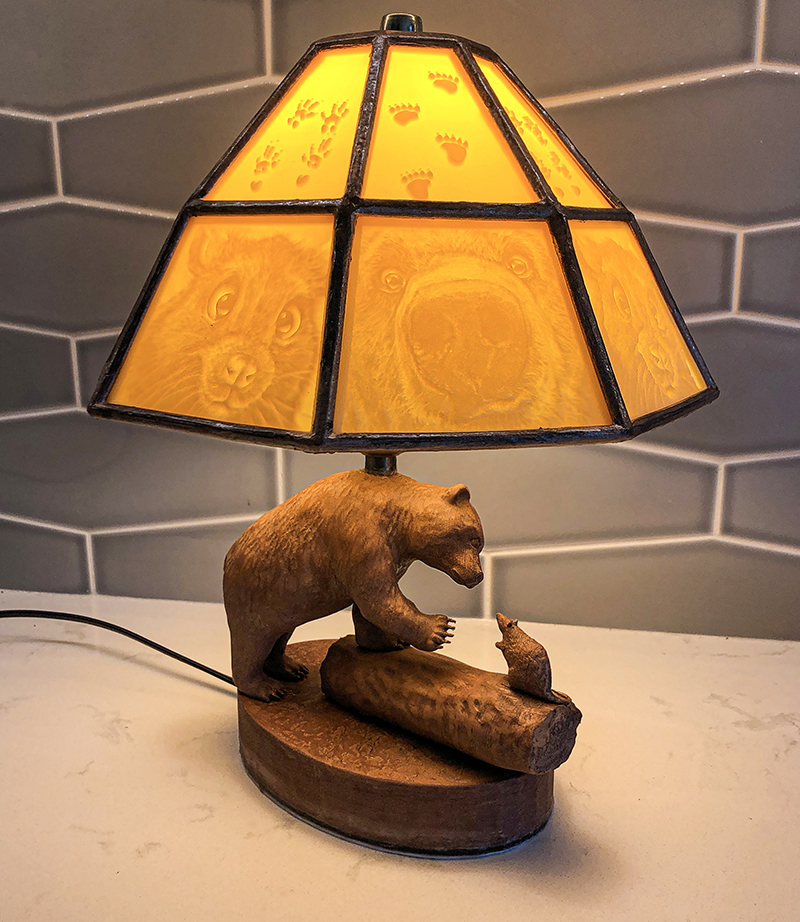 I was thrilled when he showed up at my booth on Thursday and revealed the finished piece. It looks even better than I expected and features two of my favourite paintings. This will be a fond keepsake and Expo memory, as will the second smaller bonus rat lamp he gave me.
I was thrilled when he showed up at my booth on Thursday and revealed the finished piece. It looks even better than I expected and features two of my favourite paintings. This will be a fond keepsake and Expo memory, as will the second smaller bonus rat lamp he gave me.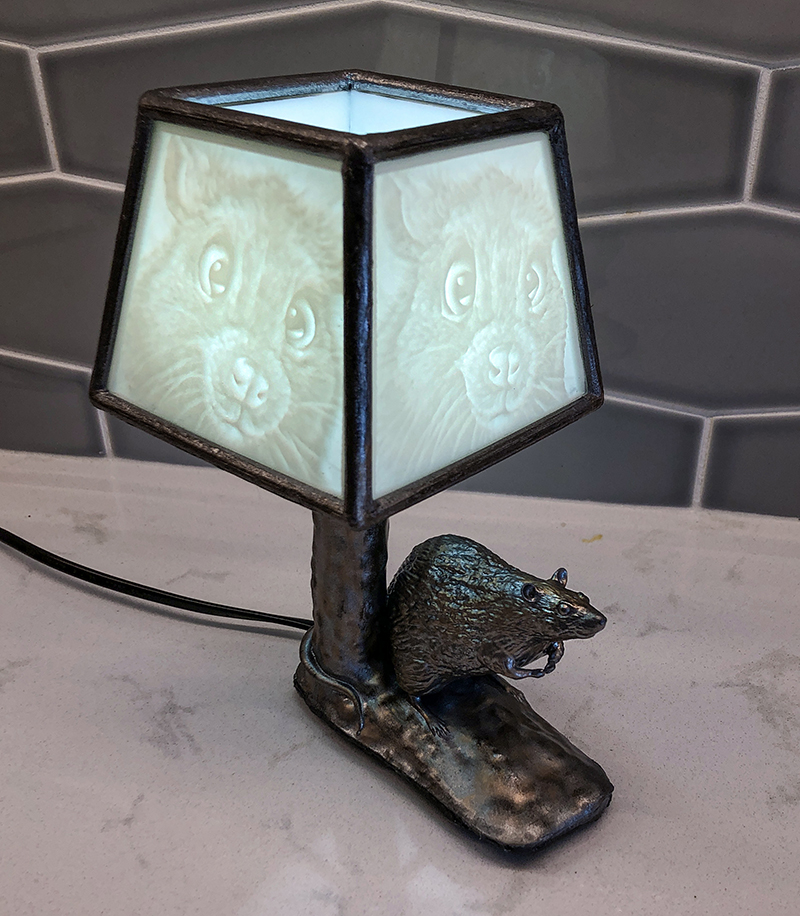 While he said he’s not in a super creative mode right now, I know that the right inspiration can turn that around on a dime.
While he said he’s not in a super creative mode right now, I know that the right inspiration can turn that around on a dime.
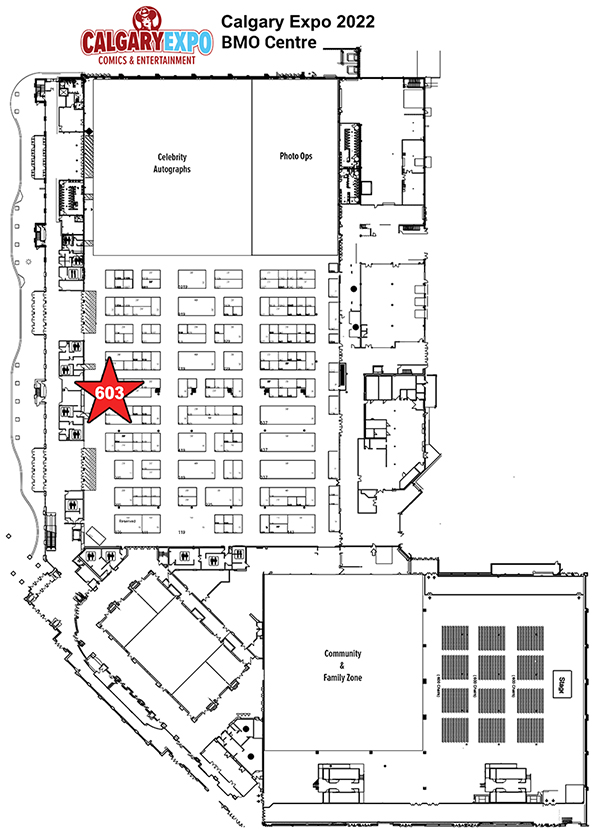
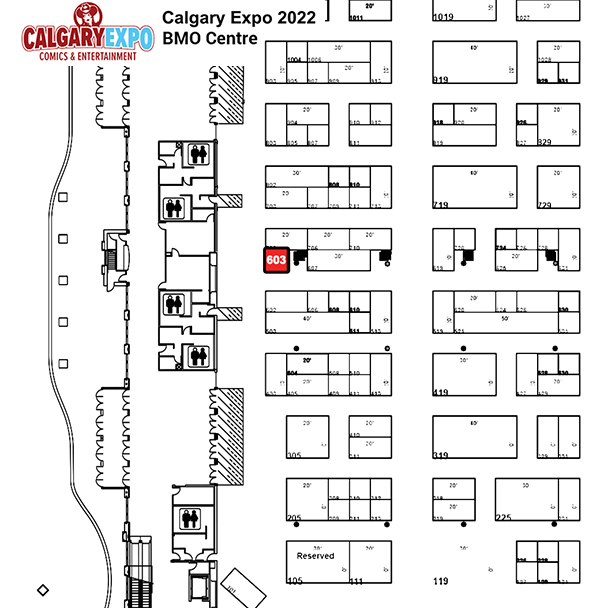 In addition to this floor plan, there is a second building for Artist Alley which looks to have a couple hundred more vendor tables.
In addition to this floor plan, there is a second building for Artist Alley which looks to have a couple hundred more vendor tables.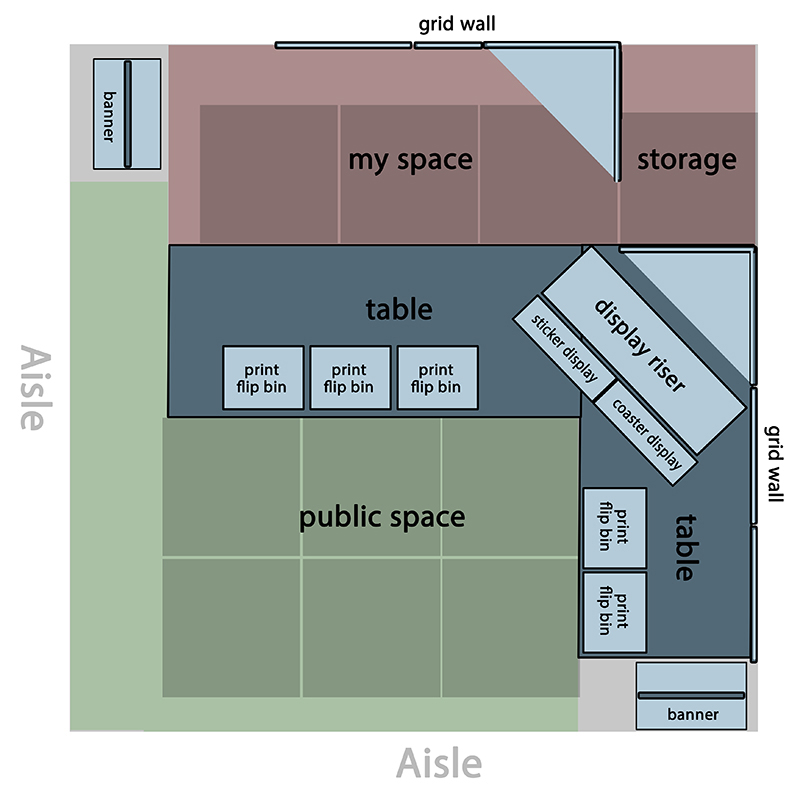 Because I’ve painted over 100 of my whimsical wildlife pieces, and so many of the early ones are still popular, it’s tough to know which to keep in stock and which to retire.
Because I’ve painted over 100 of my whimsical wildlife pieces, and so many of the early ones are still popular, it’s tough to know which to keep in stock and which to retire.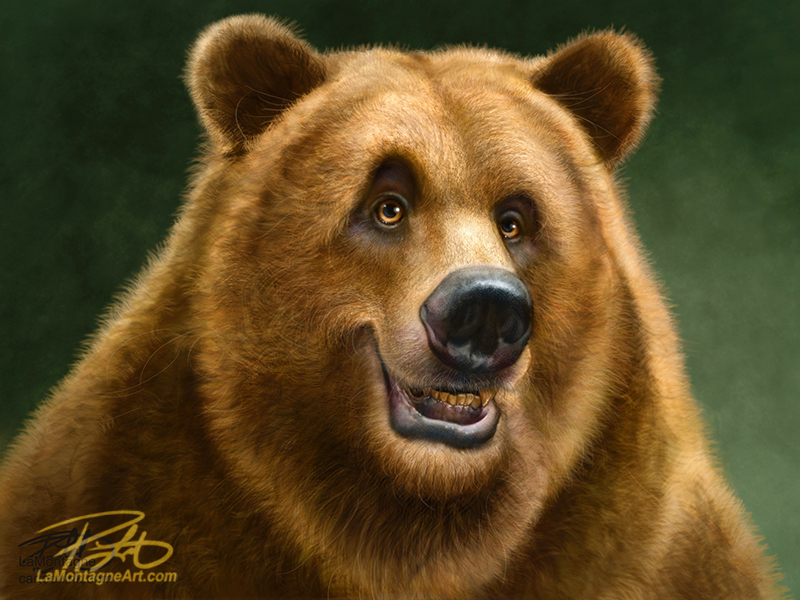


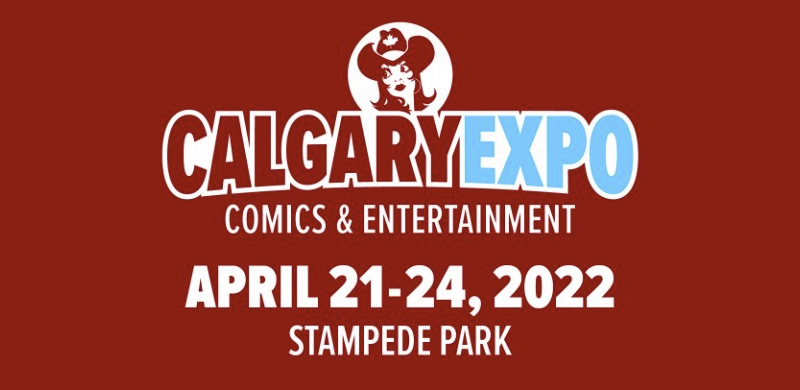
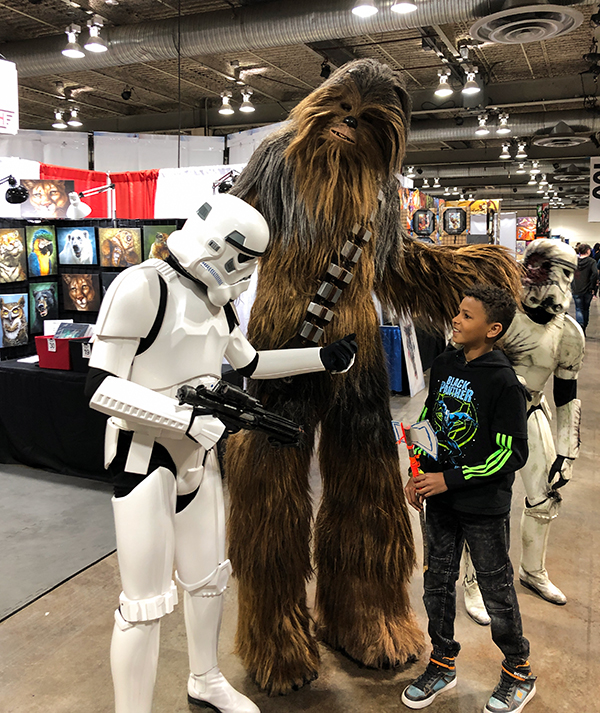 Truly an all-ages, family-friendly event, it has consistently been one of the most positive experiences I’ve had each year. The people-watching alone is worth attending, and the whole event has a circus feel.
Truly an all-ages, family-friendly event, it has consistently been one of the most positive experiences I’ve had each year. The people-watching alone is worth attending, and the whole event has a circus feel.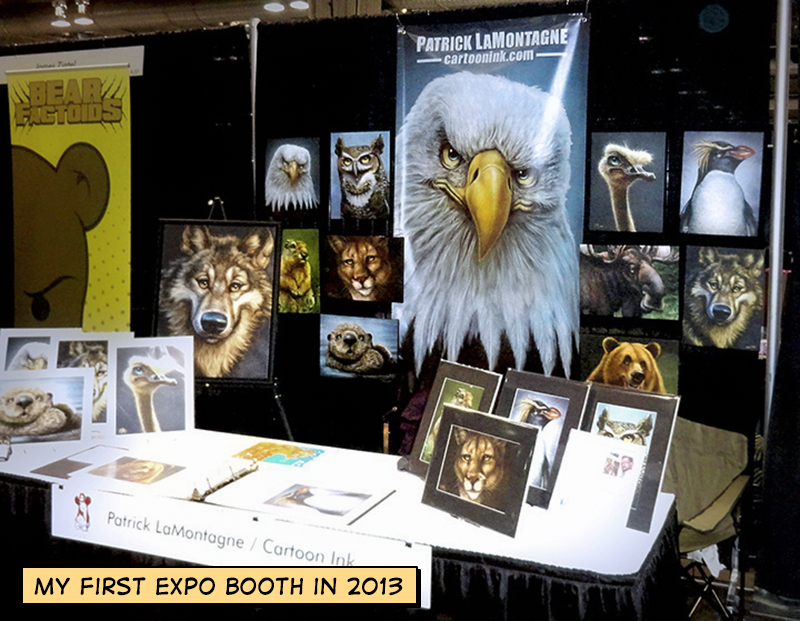
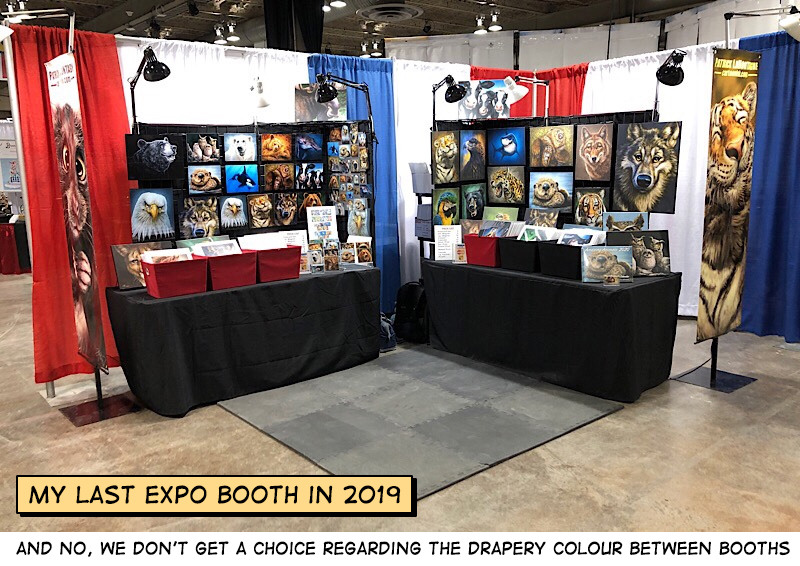 Neighbouring vendors form temporary communities at these shows. We watch each other’s booths for bathroom breaks, might do a coffee run if one of us is going, and we talk during set-up and slow periods. I hear a common question: “How did you do today?”
Neighbouring vendors form temporary communities at these shows. We watch each other’s booths for bathroom breaks, might do a coffee run if one of us is going, and we talk during set-up and slow periods. I hear a common question: “How did you do today?” That explains the hard costs, but what about my time?
That explains the hard costs, but what about my time?